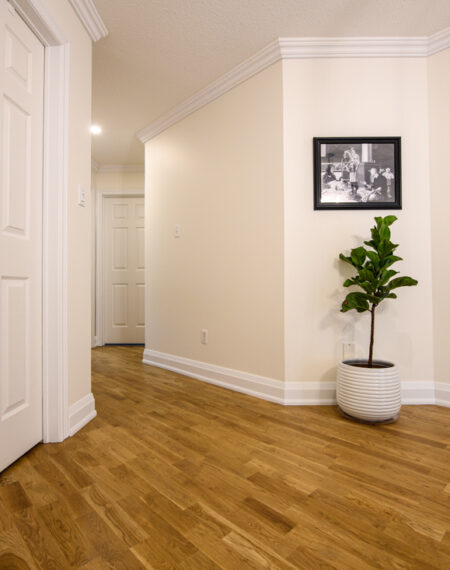When we think of flooring solutions, we picture warm-toned hardwood, luxury ceramic tiles, or rustic red brick flooring. The image of vinyl floor covering is usually almost too close to the 70s and 80s peel-and-stick flooring style. Over the past forty years, vinyl has grown to be a popular go-to flooring alternative from the stereotyped “outdated plastic” floor covering. If we’re technical, polyvinyl chloride is a plastic compound; however, the outstanding versatility it offers is incomparable. From affordability to durability and low maintenance, the perks of PVC are fetching. Relatively, the footing of vinyl’s high performance is in its industrial manufacture; the sourcing, processing, and designing have grounded the product’s massive appeal and efficiency. If you’ve ever been curious about the engineering behind your bathroom marble-look vinyl tiles, here’s a little industrial peek.
Primal Matter Processing
The component in vinyl is polyvinyl chloride- a compound of ethylene and chlorine. When manufacturing vinyl sheets and tiles , polyvinyl chloride resin combines with plasticizer pigments and trace stabilizers. The PVC resin is mixed with plasticizer and AZO and heated to decompose the AZO-forming vinyl foam. The batter-like foam is then spread on a backing and smoothed out before popping into an oven. The heated oven facilitates the absorption of the plasticizer by the vinyl resin before the foam is gelled down and set; this reinforces the material making it durable and robust.
Impress
When the gelled-down foam sets, it is run through a printing press. The industrial intaglio press is essentially carved out into a pattern at the bottom of its metallic surface to create an impression on the vinyl slab. The impression engraved into the gel sheet is mainly decorative.
The second layer of plasticizer and vinyl gets poured onto the impressed gel before baking at an even higher temperature. This time, the vinyl doesn’t just stop at absorbing the plasticizer but instead melts to create a clear vinyl surface known as the wear layer. Correspondent to the name, the wear layer takes up all the abrasion and foot traffic, preserving the printed pattern underneath.
Designs and Textured Finishes
Vinyl manufacturing companies are always looking for color and pattern inspiration to work into the sheets. The design department puts in months of work to develop marketable styles which are later drawn and transferred to a computer. These design prototypes are adjusted into different variations and printed in full color before pasting them onto the vinyl sheet. The sheet is layered with polyurethane for a glossy finish, whereas matte finishes go straight into the roller.
Final Cut and Inspection
The fully processed vinyl sheets are now cut into rolls of 5 feet by 1500 feet which can later get tailored to the client’s needs. Before packing the vinyl beauties up for shipment, the manufacturer performs a thorough quality inspection to determine if the product is up to par. The quality inspection aims to weed out any defective items while checking the thickness and elasticity of the sheets under different temperatures. Finally, the vinyl gets inspected for rupture resistance and durability before curing for packaging.
The milestone of vinyl right from the source to the vibrant, tangible product is enthralling. Understanding the technicalities of PVC production serves to do more than satisfy general curiosity; it enables one to make an informed call on product purchases. PVC is an evolutionary compound with so much more to offer; we’re looking at resilience, efficiency, and versatility on a broader spectrum. Vinyl gives a whole new perspective to flexibility by accommodating a variety of designs, cuts, textures, and patterns.
Conclusion
Ideally, the rationale behind vinyl manufacturing was to rid conformity to monotony in our homes and commercial spaces, so the next time you’re looking to explore a new flooring project for your home or office, consider vinyl flooring due to its exciting features.
Contact Us
Zelta is your one-stop shop for all your tiling needs. Give us a call today and we’ll help you find the right tiles for your home.

